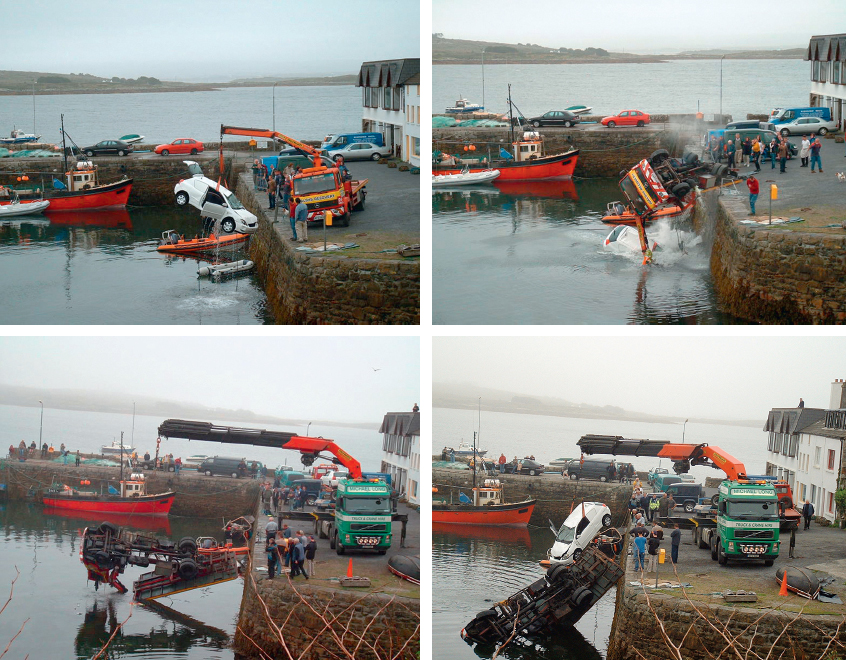Generating Ideas
For more strategies for generating ideas, see Ch. 19.
Find a Topic. What familiar situation would be informative or instructive to explore? This assignment leaves you the option of writing from what you know, what you can find out, or a combination of the two. Begin by letting your thoughts wander over the results of a particular situation. Has the situation always been this way? Or has it changed in the last few years? Have things gotten better or worse?
When your thoughts begin to percolate, jot down likely topics. Then choose the idea that you care most about and that promises to be neither too large nor too small. A paper confined to the causes of a family’s move from New Jersey to Montana might be a single sentence: “My father’s company transferred him.” But the subsequent effects of the move on the family might become an interesting essay. On the other hand, you might need hundreds of pages to study all the effects of gangs in urban high schools. Instead, you might select just one unusual effect, such as gang members staking out territory in the parking lot of a local school.
DISCOVERY CHECKLIST
- Has a difficult situation resulted from a change in your life (a lost job or a new one; a fluctuation in income; personal or family upheaval following death, divorce, accident, illness, or good fortune; a new school)?
- Has the environment changed (due to a drought, a flood or a storm, a fire, a new industry, the collapse of an old industry)?
- Has a disturbing situation been caused by an invention (the laptop, the e-reader, the DVD player, the 3-D television, the ATM, the smartphone)?
- Do certain employment trends cause you concern (for women in management, for young people in rural areas, for men in nursing)?
- Is a situation on campus or in your neighborhood, city, or state causing problems for you (traffic, housing, access to healthy food, health care)?
List Causes and Effects. After noting causes and effects, consider which are immediate (evident and close at hand), which are remote (underlying, more basic, or earlier), and how you might arrange them in a logical sequence or causal chain.

FOCUS ON CAUSAL CHAIN
| Remote Causes | → | Immediate Causes | → | Situation | → | Immediate Effects | → | Remote Effects |
| Foreign competition | → | Sales, profits drop | → | Clothing factory closing | → | Jobs vanish | → | Town flounders |
For more on thinking critically, see Ch. 3.
Once you figure out the basic causal relationships, focus on complexities or implications. Probe for contributing, related, or even hidden factors. As you draft, these ideas will be a rich resource, allowing you to focus on the most important causes or effects and to skip any that are minor.
| FOCUS ON IMMEDIATE EFFECTS | FOCUS ON REMOTE EFFECTS | ||
| Factory workers lose jobs | → | Households curtail spending | Town economy undermined |
| Grocery and other stores suffer | → | Businesses fold | Food pantry, social services overwhelmed |
| Workers lose health coverage | → | Health needs ignored | Hospital limits services and doctors leave |
| Retirees fear benefits lost | → | Confidence erodes | Unemployed and young people leave |
See the Quick Research Guide for advice on finding a few pertinent sources.
Consider Sources of Support. After identifying causes and effects, note your evidence next to each item. You can then see at a glance exactly where you need more material. Star or underline any causes and effects that stand out as major ones. Ask, How significant is this cause? Would the situation not exist without it? (This major cause deserves a big star.) Or would the situation have arisen without it, for some other reason? (This minor cause might still matter but be less important.) Has this effect had a resounding impact? Is it necessary to explain the results adequately?
As you set priorities — identifying major causes or effects and noting missing information — you may wish to talk with others, use a search engine, or browse the library Web site for sources of supporting ideas, details, and statistics. You might look for illustrations of the problem, accounts of comparable situations, or charts showing current data and projections.